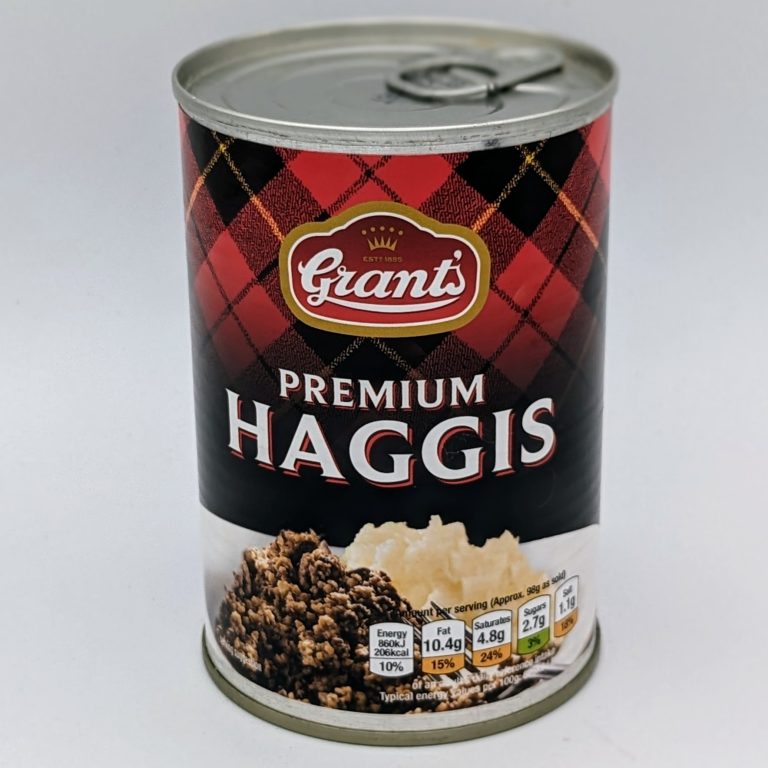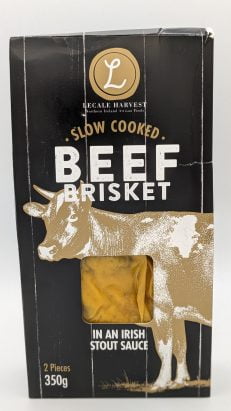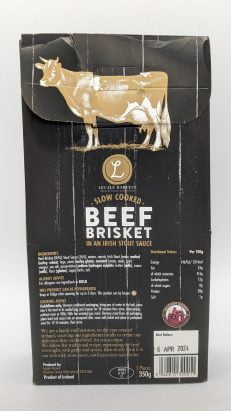Haggis has to be the number one most requested product that we haven’t been able to stock – until now. Unfortunately Brexit has made it impractical for small retailers like us to get meat and dairy products out of the UK. But after a prolonged absence from our shelves, we’ve finally found a way to bring it to you. OK, it’s in a can rather than a sheep’s stomach, but it’s the best we can do! At long last we’re proud to offer you Grant’s Haggis, which has been produced to a traditional recipe for over 135 years.
Haggis is a traditional Scottish dish which is every bit as maligned and misunderstood as it is delicious. If you’ve already tried and loved it, read no further, you know exactly what you’re getting here. But if you’re new to haggis, we understand you might be a bit apprehensive. It’s a food which often raises eyebrows and sparks curiosity among those unfamiliar with it. Many people are sceptical about trying it for the first time, so let us give you a quick guide as to what you’re in for!
What is haggis?
Haggis is a savoury dish that’s considered a Scottish culinary icons. In fact, alongside shortbread and whisky, it’s probably the most famous food or drink to come from Scotland. In the simplest terms, it’s a mixture of minced sheep’s heart, liver, and lungs, combined with oatmeal, onions, suet (animal fat, often from a sheep), and a blend of spices, all encased in a sheep’s stomach lining. While this list of ingredients might not sound too promising, rest assured, it’s much, much tastier than it sounds on paper. It’s important to remember that haggis has been a part of Scottish cuisine for centuries, and no food is going to hang around for this long, and be so famous and beloved, if it’s not delicious!
Haggis is more than just a food – it’s a symbol of Scottish identity and pride. Burns Night, celebrated on the 25th of January each year, is the key occasion for enjoying haggis in Scotland. Even those who normally spurn it will happily tuck into haggis, neeps and tatties on this evening. The event typically includes the “Address to a Haggis” recitation, and the centrepiece of the meal is often escorted into the dining room by a piper playing a salute on the bagpipes!
Where does haggis come from?
The origins of haggis can be traced back centuries, and its roots are thought to be connected to the dietary habits of the ancient Celts. Early versions of haggis likely included a mix of minced organ meats, grains, and seasonings, cooked in animal stomachs, a method that was practical and resourceful for the time.
Although dishes similar to haggis were probably eaten in other parts of the world, Haggis has become inextricably associated with Scotland as it evolved over the centuries. By the late 18th century, it had become a beloved and emblematic dish of Scottish cuisine. The most famous reference to haggis in Scottish literature comes from Robert Burns’ poem, “Address to a Haggis,” which was written in 1787, and even to this day, is usually recited during Burns Night celebrations. Burns’ tribute to the “great chieftain o’ the Puddin-race” helped solidify haggis’s place in Scottish culture.
How is haggis made?
The preparation of haggis involves meticulous care in selecting and cleaning the sheep’s stomach lining, which is used as the casing for the dish. The minced meat and other ingredients are then mixed together, seasoned, and stuffed into the stomach lining, which is tied securely.
The prepared haggis is traditionally cooked in a large pot over an open fire, or more commonly, simmered in a pot of boiling water. The use of a sheep’s stomach as a casing is not only a practical and economical use of available resources, but also served as a way to preserve the dish in times before refrigeration. As it simmers, the various flavours meld together, and the oatmeal absorbs the cooking liquids, creating the distinctive texture and taste.
Historically, haggis was a seasonal dish that helped make use of the entire sheep after a winter slaughter. The combination of organ meats and oatmeal was not only tasty, but also a practical way to make the most of available ingredients. Its seasonality made it a special treat, often reserved for festive occasions and celebrations.
In modern times, haggis has undergone some changes to adapt to contemporary tastes and culinary practices. While it is still widely enjoyed in Scotland prepared in the traditional style, there are also variations that use artificial casings instead of sheep’s stomach, and even vegetarian equivalents which are every bit as delicious as the meaty original.
What does haggis taste like?
Haggis has a distinct, hearty flavor with a rich, earthy undertone. The combination of the minced meat, oatmeal, and spices creates a savoury and slightly peppery taste. The oatmeal gives it a pleasant, grainy texture, while the suet adds a subtle richness. The onions and spices contribute to a well-balanced, complex flavor profile. When cooked properly, it has a tender, crumbly consistency that pairs well with traditional accompaniments like neeps (mashed turnips) and tatties (mashed potatoes).





